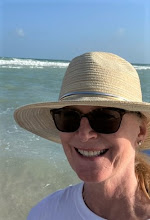In deference to modern needs, there is a medical center with an ambulance, and state workers on motorized lawn mowers can be spotted - only the state gets away with it, however. If you are shipping lumber for a new house, the delivery truck is brought over via ferry to the island but stays on the boat. Manual labor moves the lumber to a horse-drawn dray that drives to your building site. And yes, no forklifts allowed. Think about it. Concrete anyone??
Employees spend their summers on the island, many staying off island each night, taking the ferry back and forth, making minimum wage plus tips, and leaving the island in October to the 400-500 or so year-round residents. Some employees have been coming for decades and return to Jamaica each fall with an allocated amount of American goods. Horses also ship off the island in October and return in the spring to haul supplies and people from the water taxis that continually disgorge at the docks. There is a year-round school, kindergarten through high school, that services 60-80 students. This up-to-date facility offers a waterfront view most hotels would envy.
And the history - too much to recount here. The island was touched by Native Americans, French, British, and Americans - look it up. Folklore about the island’s creation abound and books are everywhere, relaying the stories, displaying the beauty of the island, or recounting its history. Tour the military fort for a cannon shot and a court martial by personable young actors. This is employment for high school and college students; it was an actual military fort, albeit not one that saw much action. Sitting high on a hill, it provides a beautiful view of the Straits.
One local grocery store remains open over the winter but not much else is open for business. Fudge and t-shirt shops have no reason to stay open. Residents use the ice bridge that forms in the winter to travel via snow mobile to St. Ignace for supplies. The percentage of those going down to their fate through the ice is not a concern - they’ve gone outside the Christmas tree line placed by the Coast Guard or have taken unwarranted risks in crossing in bad weather. And as I was told, "how many people die in car accidents every winter?" Good point. It’s a tight-knit community - tourists are welcome for the business they bring but are known derisively as "fudgies." Natives live inland in a town that is not on the tourists’ map. Wealthy immigrants, mostly summer residents, live on the water with breathtaking vistas and glorious gardens.
And the history - too much to recount here. The island was touched by Native Americans, French, British, and Americans - look it up. Folklore about the island’s creation abound and books are everywhere, relaying the stories, displaying the beauty of the island, or recounting its history. Tour the military fort for a cannon shot and a court martial by personable young actors. This is employment for high school and college students; it was an actual military fort, albeit not one that saw much action. Sitting high on a hill, it provides a beautiful view of the Straits.
And the Grand Hotel - trying to reclaim or reflect the glamor of days gone by? After 6:00 pm, men are required to wear jacket and tie, and women should be in their "loveliest attire". I’m not kidding. That’s what the sign says. At any time, when you enter the hotel, the desk clerk will ask you if you are staying at the hotel. If not, there is a $10.00 fee for walking into the hotel. Don’t show up for an evening event without a tie - they will not provide one for you and will not let you in. Again, I’m not kidding. But to be fair, the hotel is grand.
The island holds its own magic and is a charming place to visit, even if you don't stay at the very grand Grand Hotel.
The island holds its own magic and is a charming place to visit, even if you don't stay at the very grand Grand Hotel.
















